Pianoforall Review: A Pro Pianist's Take on the Chord-First Approach
Pianoforall promises to teach you piano quickly, starting with chords. But does it work? I review its methods, pros, cons, and who it's truly for.

Let's be honest: traditional piano lessons have a reputation for being a slog. Weeks of finger exercises and simplistic tunes can leave even the most eager student feeling like they're practicing for a recital in a nursing home, not the next Coachella.
Enter Pianoforall, the online course promising to fast-track you to playing real music, starting with chords, not sheet music.
As a professional pianist who's paid my dues in conservatories and smoky jazz clubs alike, I was intrigued, but skeptical.
Could a chord-based method really deliver on its promises? Or is this just another case of overhyped e-learning? To find out, I dove into Pianoforall's ten ebooks and 24+ hours of video lessons.
This isn't your average review full of affiliate links and empty praise. This is a pro pianist's assessment of whether Pianoforall's unconventional methods actually work, who they work for, and if they can truly hold a candle to the rigor of traditional training.
If you're itching to tickle the ivories but dreading the slow burn, this is the review you need to read.
| Feature | Description |
|---|---|
| Format | 10 Interactive eBooks with embedded videos and audio |
| Lessons | 24.5 hours of video lessons |
| Exercises | 1000+ audio tunes and exercises |
| Additional Content | Bonus book on speed learning, bonus book on mindful playing, checkpoints |
| Teaching Style | Chord-based, play-by-ear, improvisation focused |
| Music Styles Covered | Pop, Rock, Blues, Jazz, Ballad, some Classical |
| Skill Level | Absolute Beginner to Intermediate |
| Price | $49 (one-time payment, lifetime access) |
| Device Compatibility | Mac, PC, iOS, Android |
| Pros | Quick progress, practical skills, fun and engaging, affordable, lifetime access |
| Cons | Limited theory, weak on sight-reading |
What is Pianoforall?
Pianoforall is an online piano course that takes a radical departure from the traditional method of learning. Instead of starting with sheet music and scales, Pianoforall prioritizes chords and rhythm.
It's a "play first, ask questions later" approach, promising to get you jamming to popular tunes within days, not months or years.
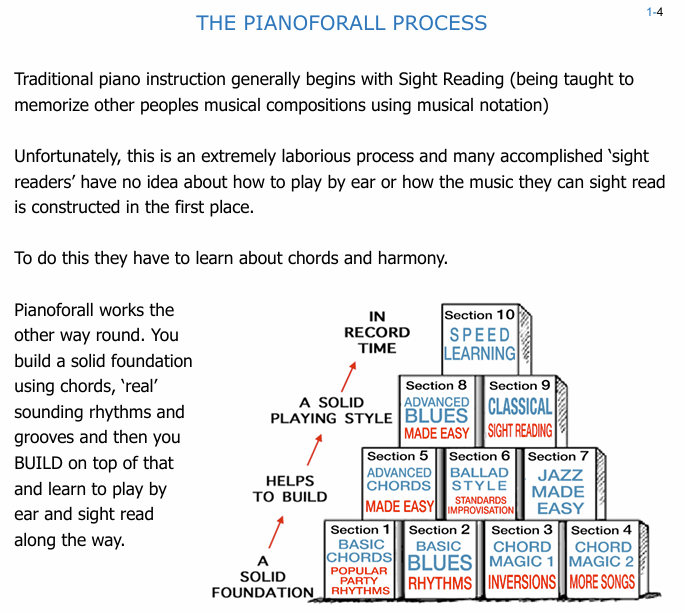
The course is delivered through ten ebooks, each packed with embedded video lessons and audio examples. There are no live classes or instructors, but the self-paced format allows you to learn at your own speed and convenience.
The ebooks cover a wide range of styles, from pop ballads and blues to jazz and even a taste of classical music.
Pianoforall's target audience is broad: complete beginners, returning players, and even those with some musical experience looking to expand their skills.
The course particularly appeals to adult learners who want to play popular music and aren't necessarily interested in the rigor of classical training.
The chord-first philosophy is the backbone of Pianoforall. It's based on the idea that understanding chords and rhythm is the foundation for musical expression.
By mastering chords, you can quickly play many popular songs and improvise your own melodies. This approach is a breath of fresh air for those who find traditional methods tedious or intimidating.
However, as a professional pianist, I see both the strengths and the potential drawbacks of this approach. While it's undeniable that chords are essential for playing most popular music, starting with them exclusively can lead to gaps in theoretical understanding and difficulty transitioning to sight-reading later on.
Curriculum Breakdown
As a pianist, I dove into Pianoforall's curriculum with a critical eye, assessing not just the content, but also the pedagogical choices made throughout the ten ebooks.
Here's my breakdown of each book, highlighting what works, what doesn't, and how it aligns (or doesn't) with the skills a working musician actually needs.
Book One: Party Time - Rhythm Style Piano
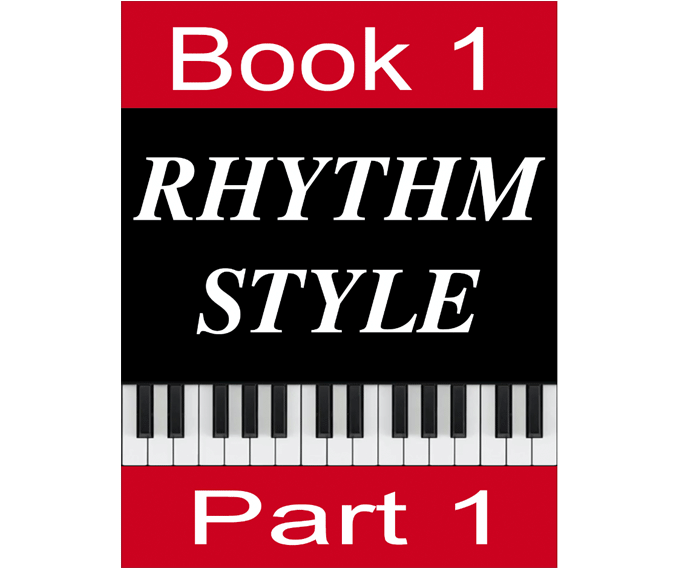
This book lays the groundwork, and it's smart. Instead of boring scales, you dive straight into chords and rhythms used in popular music. This is a fantastic way to get beginners feeling like they're making music fast.
As someone who's seen countless students quit due to early frustration, I appreciate this approach.
However, the book does gloss over some basic music theory. While the "play first, ask questions later" philosophy is engaging, a complete newbie might feel lost without a bit more explanation of why certain chords work together. The song choices are also a bit dated, leaning heavily on older pop standards.
Book Two: Blues & Rock N' Roll
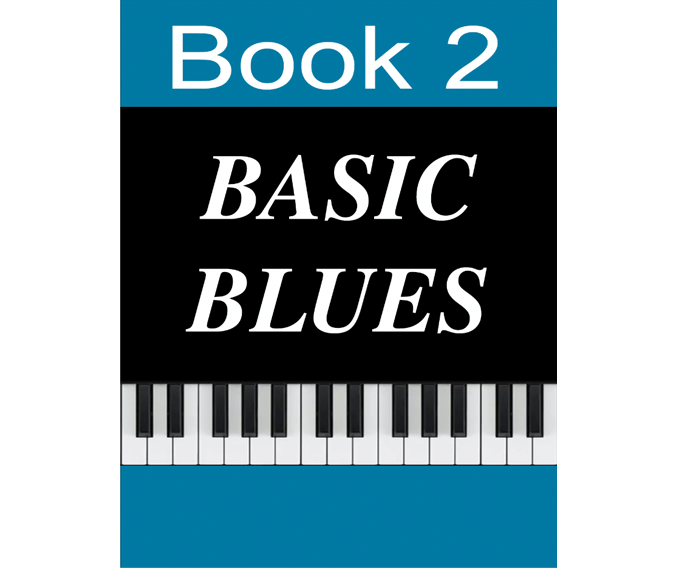
Blues piano is a staple for any gigging musician, so I was pleased to see it introduced early on. The focus on left-hand rhythms is crucial, as a strong left hand is the backbone of any good piano player. Pianoforall does a great job of drilling these rhythms into your muscle memory.
However, the book is quite short and could benefit from more in-depth explanations of blues structure and improvisation techniques.
Book Three: Incredible Inversions
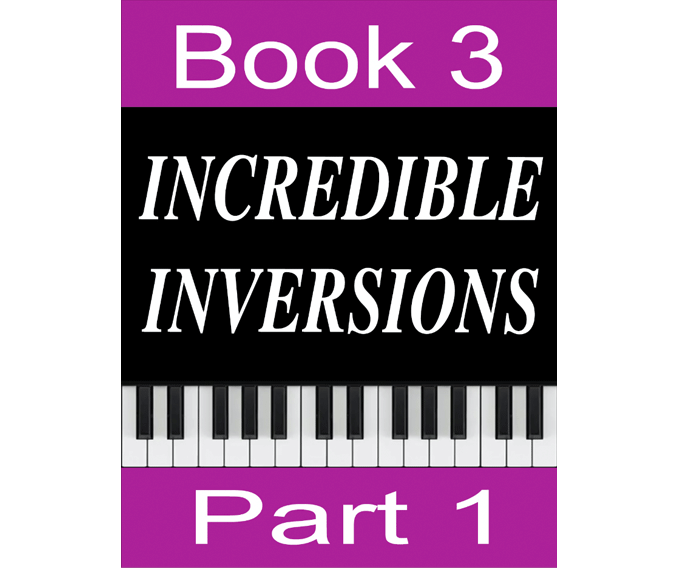
Inversions are essential for smooth voice leading and creating interesting harmonies. Pianoforall dedicates an entire book to this concept, which is commendable. The "cycle of fifths" is also introduced here, a fundamental tool for understanding key relationships and transposing music.
However, the book could be overwhelming for beginners who are still grasping basic chords. A more gradual introduction to inversions might be beneficial.
Book Four: Chord Magic
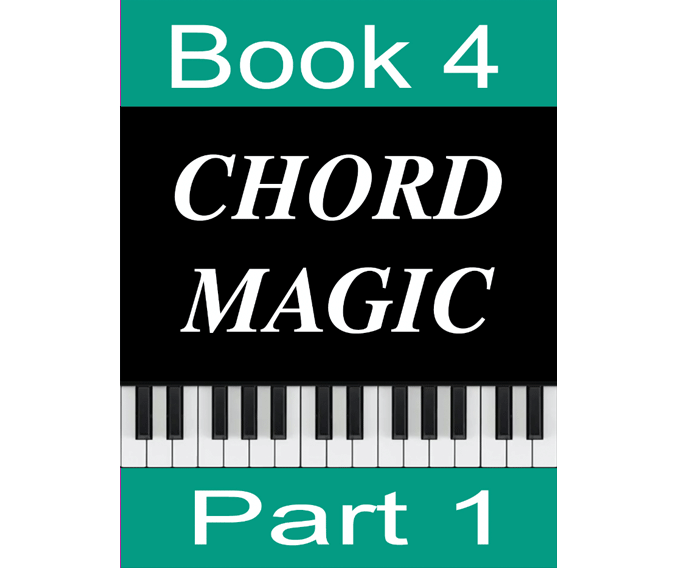
This book is a deep dive into chord theory, covering almost every major and minor chord imaginable. For someone like me who already has a strong grasp of theory, this was mostly review. However, for beginners, this could be a valuable resource for understanding chord construction and progressions.
The downside is that it can feel a bit dry and theoretical, lacking the hands-on application that makes the earlier books so engaging.
Book Five: Advanced Chords
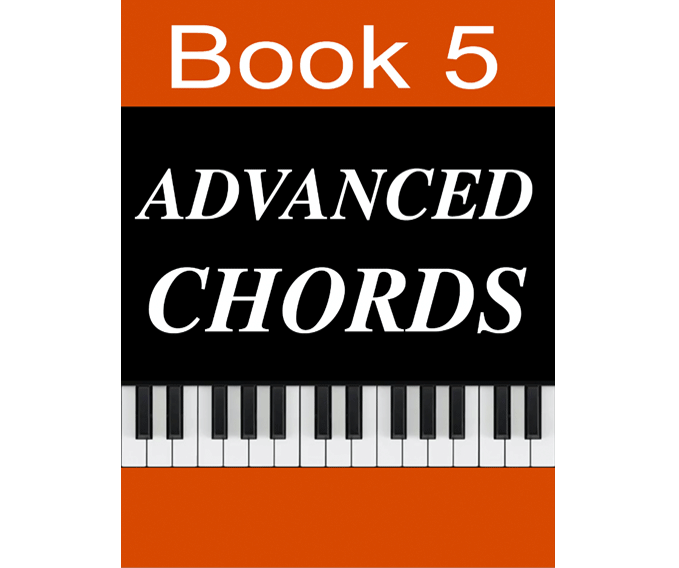
Building on Book Four, this section introduces more complex chords like 9ths, 11ths, and sus chords. It also includes a section on Beatles styling, which is a fun way to apply these new chords to familiar tunes.
However, the "magic formula" for bluffing these chords, while practical, doesn't necessarily encourage a deep understanding of their structure.
Books Six, Seven, Eight, Nine: Styles
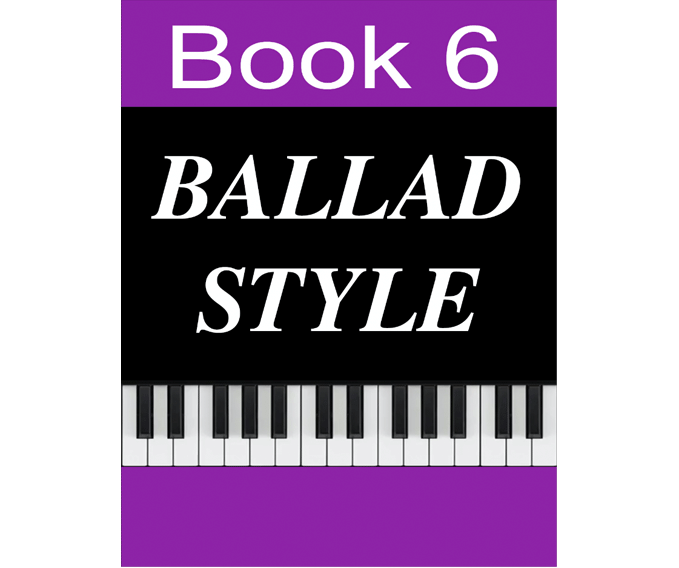
These books dive into specific styles: Ballad, Jazz, Advanced Blues, and Classical Piano. They offer valuable insights and techniques for each genre, but their effectiveness will depend on your musical interests.
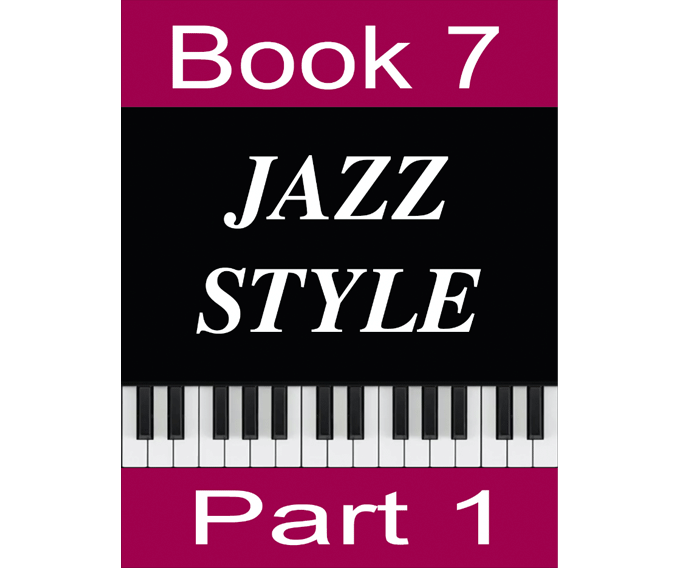
The ballad book is particularly strong, providing a step-by-step method for creating your own compositions. The jazz and blues books are also well-done, focusing on improvisation and ear training.
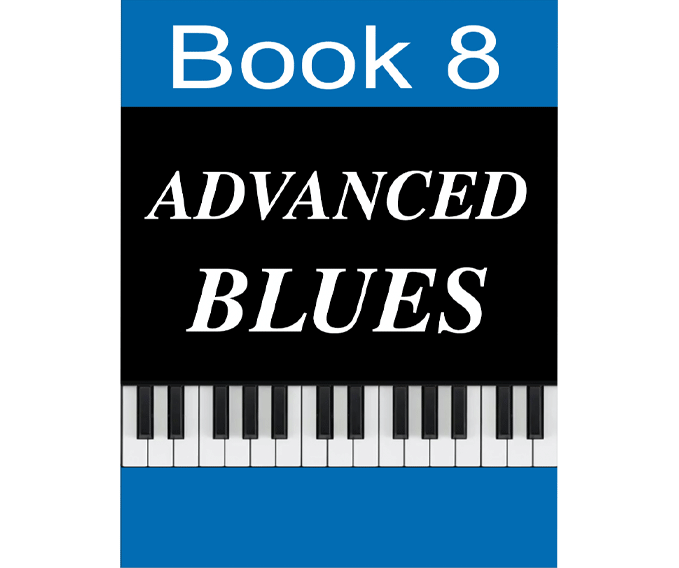
The classical book, however, is the weakest link. While it introduces some basic notation and offers a few simplified classical pieces, it's not comprehensive enough for those serious about pursuing classical music.
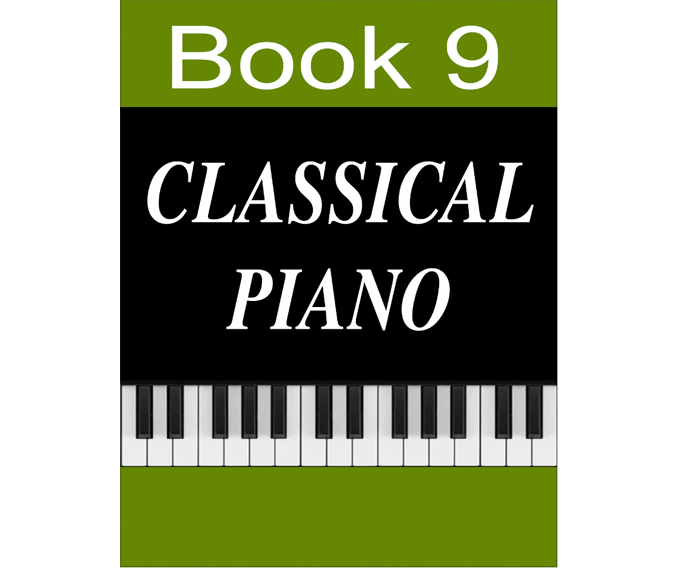
Book Ten: Speed Learning
Don't be fooled by the title; this book is about scales, arpeggios, and technical exercises. While essential for building finger strength and dexterity, it's presented in a way that's more engaging than the traditional method. The inclusion of blues and jazz workouts is a nice touch.
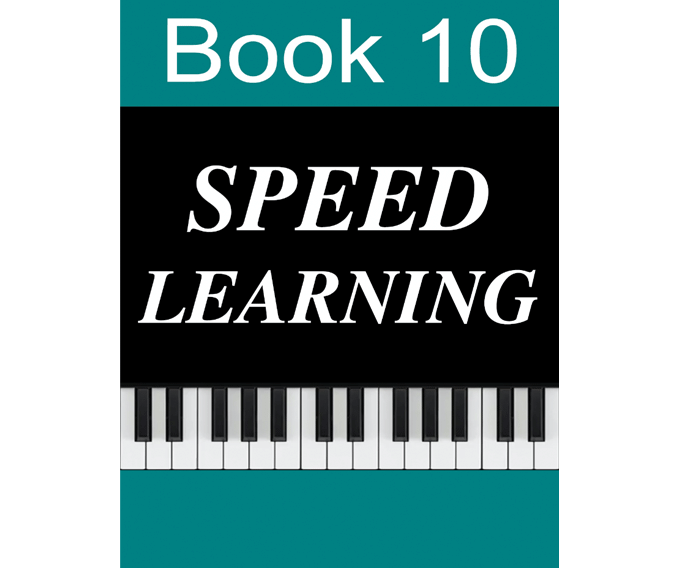
Overall, Pianoforall's curriculum is well-structured and progresses logically. The video lessons are clear and helpful, with the split-screen view of the instructor and the keyboard being particularly useful. However, the emphasis on chords and rhythm comes at the expense of some theoretical depth and sheet reading skills.
Pros and Cons: My Perspective
Pianoforall isn't without its merits, but it's crucial to weigh them against its limitations, especially through the lens of a professional musician. Here's my unvarnished take:
Pros: Beyond the Basics
- Fosters Musicality: Unlike many beginner methods that focus solely on technical drills, Pianoforall encourages playing by ear, improvisation, and even composition. This nurtures a sense of musicality that's essential for any musician, not just pianists.
- Rapid Chord Fluency: The chord-based approach is undeniably effective for building a vast chord vocabulary quickly. This is invaluable for playing popular music, accompanying singers, or jamming with friends.
- Practical for Modern Musicians: Pianoforall's emphasis on rhythm patterns and contemporary styles makes it a practical choice for those interested in playing in bands, doing covers, or simply enjoying playing modern music.
- Value for Money: Pianoforall is incredibly affordable compared to private lessons or other online courses. The lifetime access is a huge plus, allowing you to revisit the material as needed.
- Accessible Format: The ebooks and embedded videos are convenient and user-friendly, making the course accessible on various devices.
- Robin Hall's Teaching Style: Hall is a charismatic and engaging teacher. His passion for music shines through, making the lessons enjoyable and motivating.
Cons: A Pianist's Concerns
- Theory Can Be Lacking: While Pianoforall teaches you how to play chords, it doesn't always delve into the why. This can lead to a superficial understanding of music theory, making it harder to analyze and transpose complex pieces.
- Sheet Reading is a Weak Point: While the course eventually touches on sight-reading, it's not a primary focus. If your goal is to play classical music or complex arrangements, you'll likely need additional resources.
- Dated Feel: Some of the song choices and visual elements feel outdated, which might not resonate with younger teenage learners.
- Supplemental Materials Needed: Depending on your goals, you may need to supplement Pianoforall with additional resources for music theory, sight-reading, or specific genres.
In summary, Pianoforall is a powerful tool for certain types of learners, but it's not a one-size-fits-all solution. It's crucial to weigh the pros and cons based on your individual goals and learning style.
Alternatives to Pianoforall
While Pianoforall has its merits, it's not the only game in town. As a pianist, I've explored various online piano courses and can offer some insights into alternatives that might be a better fit for certain learners.
- Flowkey: If you're drawn to learning popular songs and enjoy a visually appealing interface, Flowkey is a solid option. It boasts a vast library of songs across different genres and levels, making it great for motivation and variety. However, it can be less structured than Pianoforall and might not dive as deep into improvisation or music theory.
- Playground Sessions: This gamified platform is a fun and engaging way to learn piano, especially for younger learners or those who thrive on challenges and rewards. Playground Sessions offers interactive lessons, real-time feedback, and even a virtual band to play along with. However, its focus on popular music might not satisfy those interested in classical or jazz.
- Skoove: If you're a beginner seeking a structured approach with clear guidance, Skoove could be a good match. It offers step-by-step lessons, interactive exercises, and personalized feedback. However, some users find its song selection limited and its approach less flexible than Pianoforall's.
- Traditional Lessons: If you crave personalized instruction, real-time feedback, and a structured curriculum, traditional piano lessons with a qualified teacher might be the best option. While more expensive, private lessons offer tailored guidance and can adapt to your individual needs and learning style.
When Pianoforall Isn't the Answer
Pianoforall might not be the ideal choice if:
- You're a child or need a highly structured approach: Pianoforall's self-paced format and focus on improvisation might not suit young learners or those who prefer a more rigid curriculum.
- You want to master sight-reading quickly: While Pianoforall eventually touches on sheet music, it's not the most efficient way to develop strong sight-reading skills.
A Hybrid Approach: The Best of Both Worlds
As a professional pianist, I believe a hybrid approach can be the most effective way to learn. Combining Pianoforall's strengths (chords, rhythm, improvisation) with other resources (music theory books, sheet music practice, or even traditional lessons) can create a well-rounded musical education.
For example, you could use Pianoforall to develop your chord vocabulary and improvisation skills, while supplementing with a music theory course or app to deepen your understanding of harmony and structure.
You could also use Pianoforall alongside traditional lessons, using the course to practice popular songs and explore different styles, while relying on your teacher for guidance on technique and sight-reading.
The best approach depends on your individual goals, learning style, and preferences. Don't be afraid to experiment and find the combination that works best for you. Remember, the joy of learning music comes from the journey itself, not just the destination.
What Makes Pianoforall Unique?
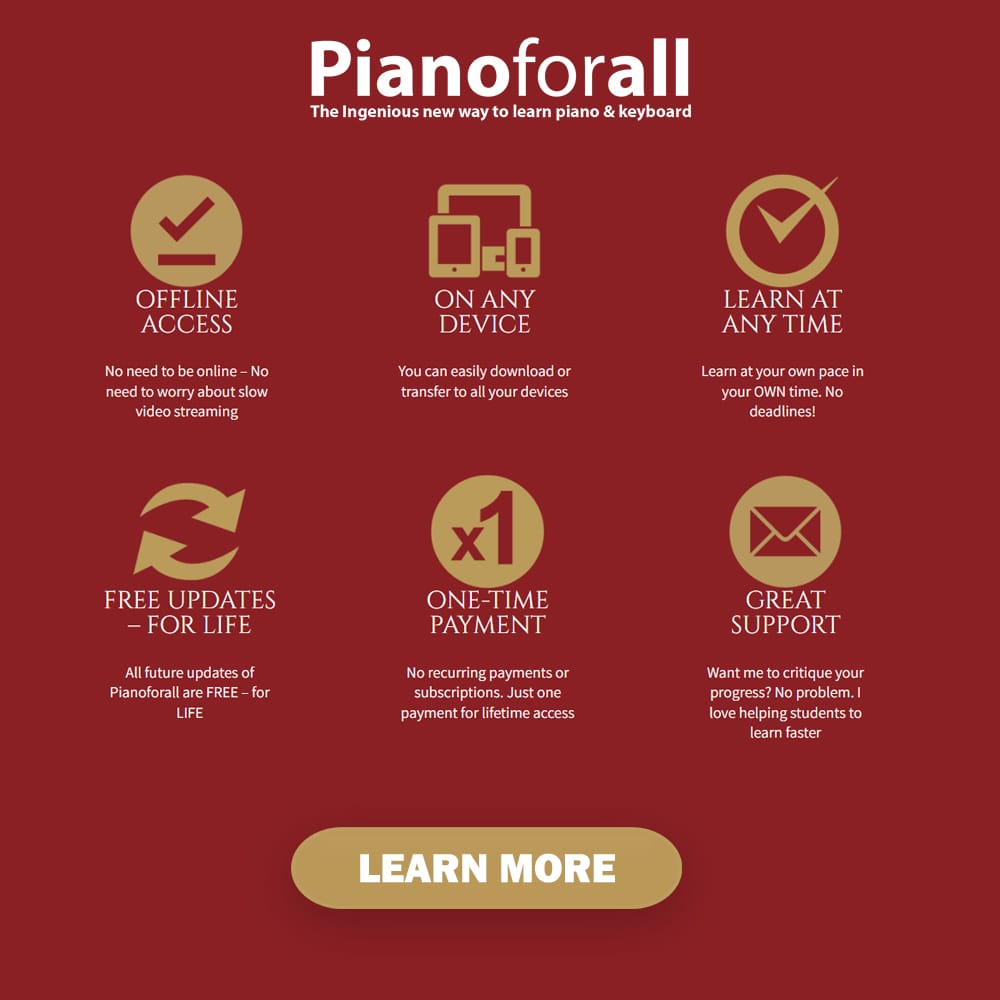
In a sea of online piano courses, Pianoforall stands out due to its unique blend of features and teaching philosophy. While some might see it as putting the cart before the horse, this unconventional approach has proven to be effective for over half a million students.
- Chord-First Philosophy: Unlike traditional methods that start with scales and note reading, Pianoforall throws you into the deep end with chords and rhythms. This allows beginners to experience the joy of playing real music almost immediately, fostering motivation and a sense of accomplishment.
- Focus on Practical Skills: Pianoforall doesn't just teach you how to play notes; it equips you with the skills to play by ear, improvise, and even compose your own melodies. These are essential skills for anyone who wants to play music beyond just reading sheet music.
- Intuitive Learning Through Patterns: The course emphasizes recognizing patterns and shapes on the keyboard, making it easier to understand chords and their relationships. This intuitive approach appeals to visual learners and simplifies the learning process.
- Gradual Introduction to Theory: While theory isn't the primary focus, Pianoforall gradually introduces concepts like the circle of fifths and chord inversions as you progress through the course. This allows you to apply theoretical knowledge in practical ways.
- Emphasis on Rhythm: Pianoforall places a strong emphasis on rhythm, teaching various patterns and styles that bring your playing to life. This focus on rhythm sets it apart from many other courses that primarily focus on melody and harmony.
- Accessible Digital Format: The interactive ebooks with embedded videos and audio make learning convenient and engaging. You can access the course on various devices, and the offline functionality is a major plus for those with limited internet access.
- Affordable Price and Lifetime Access: Pianoforall's one-time payment model and affordable price make it a cost-effective option compared to many other online courses or private lessons. The lifetime access ensures you can revisit the material whenever you need a refresher.
While these unique features make Pianoforall a popular choice for many, it's important to note that this approach might not suit everyone. Those seeking a more traditional, theory-heavy approach or those primarily interested in classical music might find Pianoforall's methods less appealing.
However, for those who want to play popular music quickly, Pianoforall offers a refreshing and effective alternative to traditional piano lessons.
Is Pianoforall Worth the Hype for Aspiring Pianists?
After a deep dive into Pianoforall's curriculum and philosophy, it's clear that this course is a unique beast in the world of piano education. It's not the most comprehensive or rigorous method, but it does offer a fast track to playing popular music, fostering musicality, and building a solid foundation in chords and rhythm.
If you're an adult learner eager to play songs you love, jam with friends, or simply enjoy the satisfaction of creating music without getting bogged down in theory, Pianoforall might be your perfect piano partner. Its affordability and accessible format are also major pluses.
However, if you're serious about classical music, or have your sights set on advanced piano skills, Pianoforall offers another course called Classics by Ear.
In the end, Pianoforall is a valuable tool, but it's not a magic bullet. Like any instrument, mastering the piano requires dedication, practice, and a willingness to explore different learning avenues.
Pianoforall can be a fantastic starting point or a valuable addition to your musical toolkit, but it's up to you to decide if it's the right fit for your musical journey.
Remember, the most important factor is finding a method that sparks your passion and keeps you motivated to play. If Pianoforall ignites that spark, then go for it!
The world of music is vast and varied, and there's no single "right" way to explore it. So, whether you choose Pianoforall or another path, embrace the journey and let your fingers dance across the keys.




Comments ()